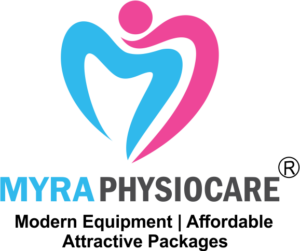Upper Limb Fractures
Upper limb fractures are common injuries that can affect the bones of the arm, wrist, hand, or fingers. Physiotherapy can be an important part of the recovery process, as it can help to restore strength, mobility, and function to the affected limb.
Here are some ways that physiotherapy can help individuals with upper limb fractures:
- Immobilization management: Following a fracture, the affected limb may need to be immobilized in a cast or splint. A physiotherapist can provide guidance on how to properly care for the immobilized limb, including exercises to maintain joint mobility and prevent muscle atrophy.
- Rehabilitation exercises: Once the cast or splint is removed, a physiotherapist can provide a rehabilitation program that includes exercises to restore strength, flexibility, and range of motion to the affected limb.
- Manual therapy: Manual therapy techniques, such as massage and joint mobilization, can help to reduce pain and stiffness in the affected limb.
- Education: A physiotherapist can provide education on how to safely use the affected limb during daily activities, as well as how to prevent future injuries.
- Splinting and bracing: In some cases, a splint or brace may be recommended to help support the affected limb during the healing process. A physiotherapist can recommend the appropriate splint or brace and provide guidance on how to use it.
Overall, physiotherapy can play an important role in the recovery process for upper limb fractures. It can help to restore strength, mobility, and function to the affected limb and reduce the risk of future injuries. A physiotherapist can work with you to create a customized treatment plan that is tailored to your specific needs and goals.
There are several reasons why you may choose to incorporate physiotherapy into your treatment plan for upper limb fractures:
- Improved healing: Physiotherapy can help to promote healing and reduce the recovery time after an upper limb fracture by improving circulation to the affected area, reducing inflammation, and promoting tissue repair.
- Restoring mobility: After a fracture, the affected limb may become stiff and difficult to move. Physiotherapy can help to restore mobility and flexibility to the affected limb through exercises and stretches.
- Strengthening the affected limb: Following a fracture, the affected limb may become weak due to disuse or muscle atrophy. Physiotherapy can help to rebuild strength in the affected limb through exercises and resistance training.
- Pain relief: Fractures can be very painful, and physiotherapy can help to alleviate pain through various techniques such as massage, heat therapy, and stretching.
- Prevention of future injuries: By restoring strength and mobility to the affected limb, physiotherapy can help to reduce the risk of future injuries or complications.
Overall, physiotherapy can be a valuable addition to your treatment plan for upper limb fractures. It can help to improve healing, restore mobility, rebuild strength, provide pain relief, and reduce the risk of future injuries. A physiotherapist can work with you to create a customized treatment plan that is tailored to your specific needs and goals.
